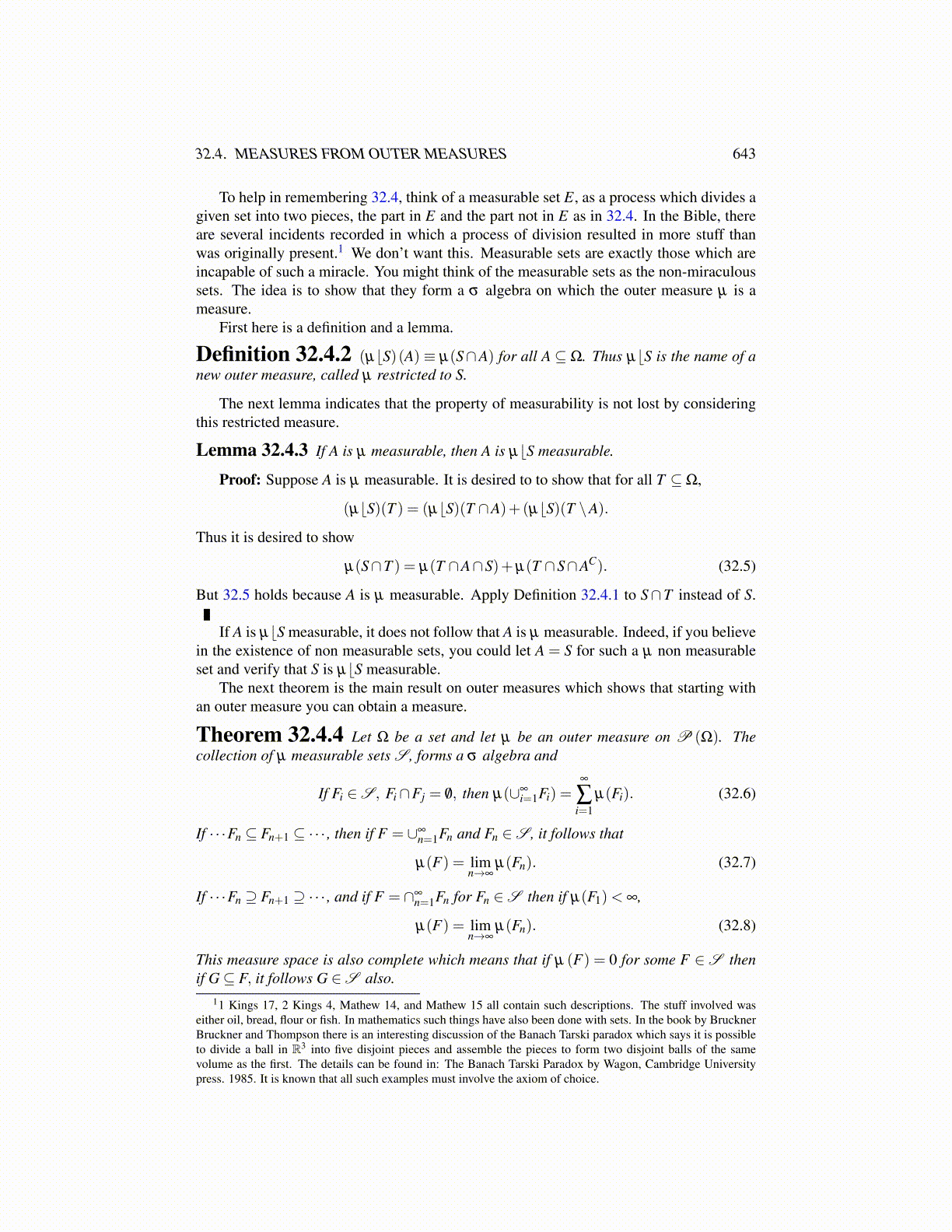
32.5. RIEMANN INTEGRALS FOR DECREASING FUNCTIONS 643
32.5 Riemann Integrals for Decreasing FunctionsA decreasing function is always Riemann integrable. This is discussed in Proposition 7.3.8I will define the Lebesgue integral for a nonnegative function in terms of an improperRiemann integral which involves a decreasing function.
Definition 32.5.1 Let f : [a,b]→ [0,∞] be decreasing. Define∫ b
af (λ )dλ ≡ lim
M→∞
∫ b
aM∧ f (λ )dλ = sup
M
∫ b
aM∧ f (λ )dλ
where A∧B means the minimum of A and B. Note that for f bounded,
supM
∫ b
aM∧ f (λ )dλ =
∫ b
af (λ )dλ
where the integral on the right is the usual Riemann integral because eventually M > f .For f a nonnegative decreasing function defined on [0,∞),∫
∞
0f dλ ≡ lim
R→∞
∫ R
0f dλ = sup
R>1
∫ R
0f dλ = sup
RsupM>0
∫ R
0f ∧Mdλ
Now here is an obvious property.
Lemma 32.5.2 Let f be a decreasing nonnegative function defined on an interval [a,b] .Then if [a,b] =∪m
k=1Ik where Ik ≡ [ak,bk] and the intervals Ik are non overlapping, it follows∫ b
af dλ =
m
∑k=1
∫ bk
ak
f dλ .
Proof: This follows from the computation,∫ b
af dλ ≡ lim
M→∞
∫ b
af ∧Mdλ
= limM→∞
m
∑k=1
∫ bk
ak
f ∧Mdλ =m
∑k=1
∫ bk
ak
f dλ
Note both sides could equal +∞.
32.6 Lebesgue Integrals of Nonnegative FunctionsHere is the definition of the Lebesgue integral of a function which is measurable and hasvalues in [0,∞]. The idea is motivated by the following picture in which f−1 (λ i,∞) isA∪B∪C and we take the measure of this set, multiply by λ i −λ i−1 and do this for each λ iin an increasing sequence of points, λ 0 ≡ 0. Then we add the “areas” of the little horizontal“rectangles” in order to approximate the “area” under the curve. The difference here isthat the “rectangles” in the sum are horizontal whereas with the Riemann integral, theyare vertical. Note how it is important to be able to measure f−1 (λ ,∞)≡ {x : f (x)> λ} ≡[ f > λ ] which is what it means for f to be measurable. Also note that, in spite of the picture,in general we don’t know a good description of this set other than that it is measurable.
λ i
A B C
y = f (x)